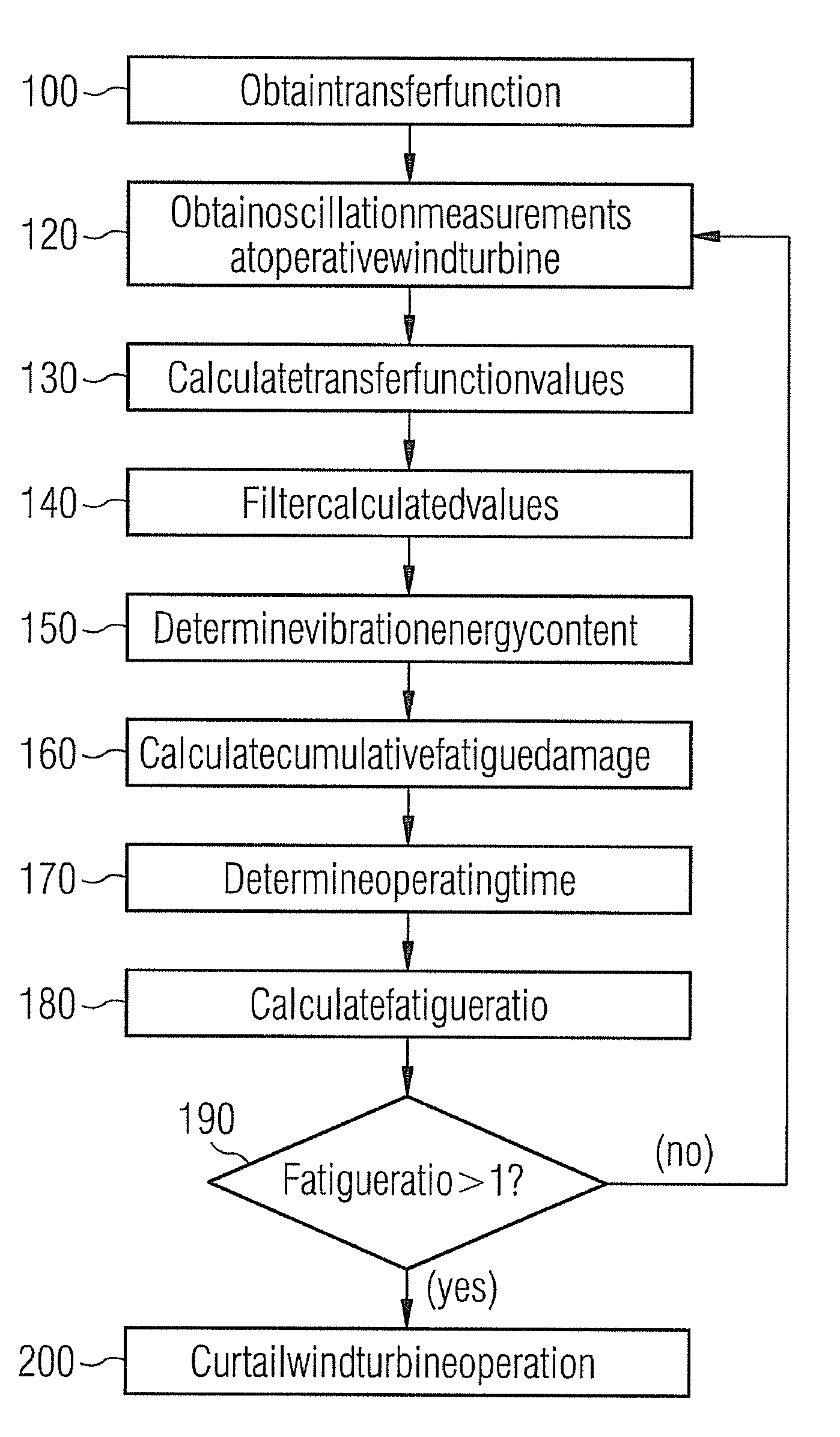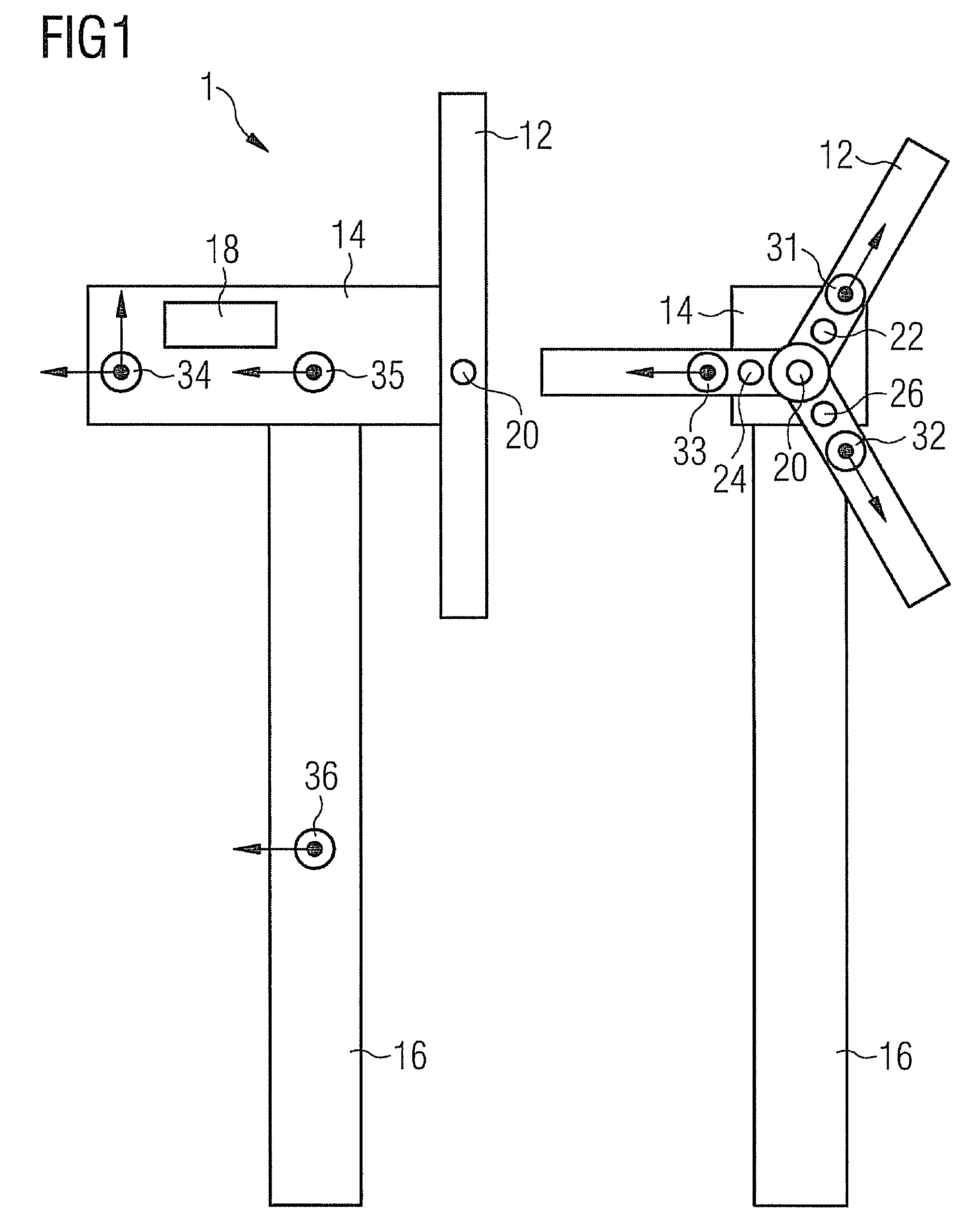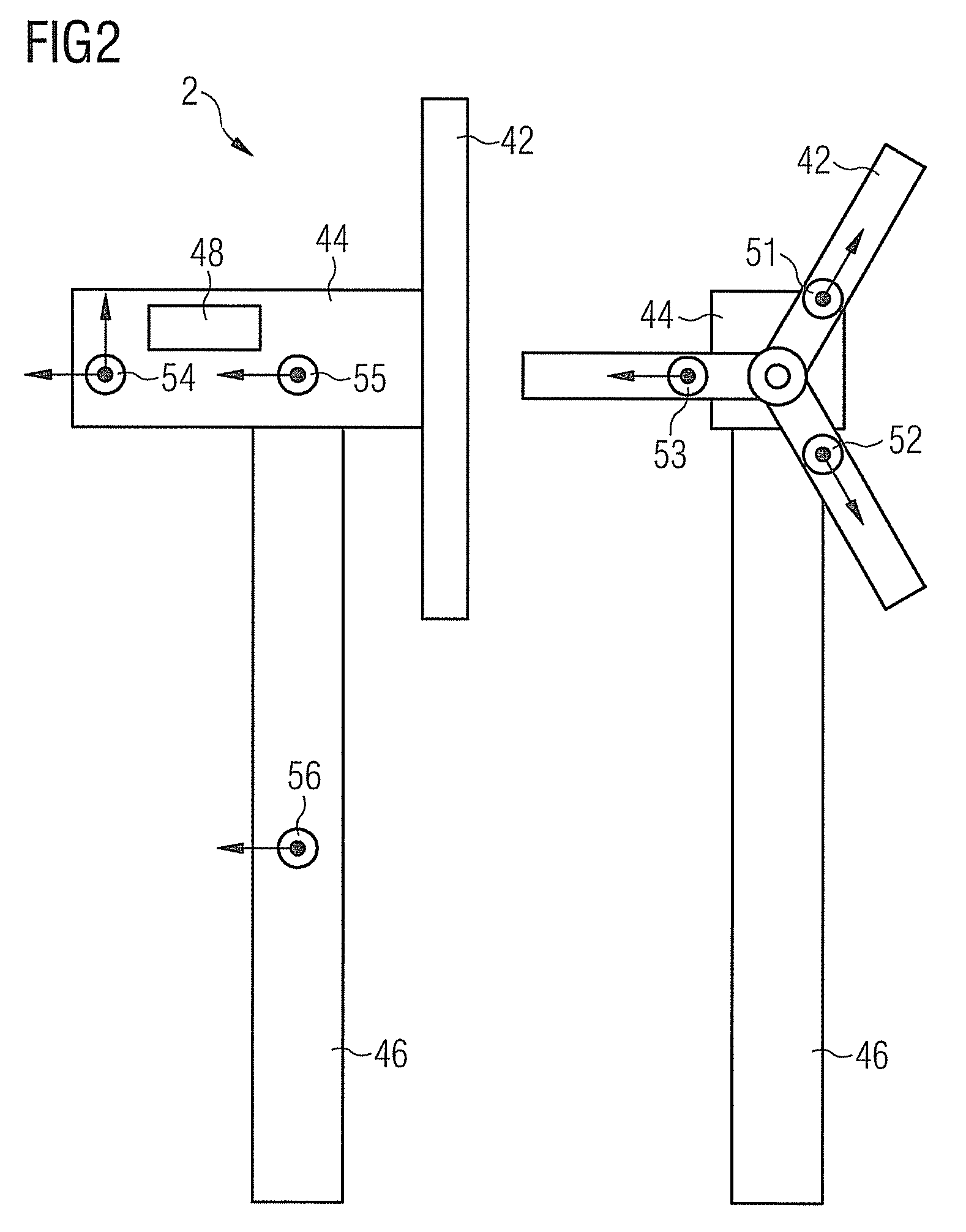Method for determining fatigue load of a wind turbine and for fatigue load control, and wind turbines therefor
a technology of wind turbines and fatigue loads, which is applied in the direction of wind energy generation, liquid fuel engine components, special data processing applications, etc., can solve the problems of wind turbine fatigue damage, wind turbines that do not produce energy, and unusable times of unavailability, so as to reduce the amount of sensors, reduce the complexity of calculation, and increase the robustness of the sensor system
- Summary
- Abstract
- Description
- Claims
- Application Information
AI Technical Summary
Benefits of technology
Problems solved by technology
Method used
Image
Examples
Embodiment Construction
[0060]FIG. 1 shows a schematic overview of an embodiment of the reference wind turbine. Reference wind turbine 1 is depicted in a side view on the left hand side of FIG. 1, and in a front view on the right hand side of FIG. 1. Reference wind turbine 1 comprises a rotor 12, a nacelle 14, a processing unit 18, and a wind turbine tower 16.
[0061]The rotor 12 is connected to nacelle 14 via a rotor hub (not shown) at the centre or rotor rotational axis of rotor 12 and the extension of the rotational axis in the nacelle 14. The nacelle 14 is mounted on top of the wind turbine tower 16.
[0062]In the present embodiment, processing unit 18 is located in the nacelle and is connected to various sensors and / or other devices throughout the wind turbine, as will be described in more detail below. Processing unit 18 may also be located in other parts of the wind turbine or in a separate processing device that may be connected with the wind turbine via a communication line.
[0063]A first set of sensor...
PUM
| Property | Measurement | Unit |
|---|---|---|
| frequencies | aaaaa | aaaaa |
| frequency analysis | aaaaa | aaaaa |
| frequency | aaaaa | aaaaa |
Abstract
Description
Claims
Application Information
 Login to View More
Login to View More - R&D
- Intellectual Property
- Life Sciences
- Materials
- Tech Scout
- Unparalleled Data Quality
- Higher Quality Content
- 60% Fewer Hallucinations
Browse by: Latest US Patents, China's latest patents, Technical Efficacy Thesaurus, Application Domain, Technology Topic, Popular Technical Reports.
© 2025 PatSnap. All rights reserved.Legal|Privacy policy|Modern Slavery Act Transparency Statement|Sitemap|About US| Contact US: help@patsnap.com



